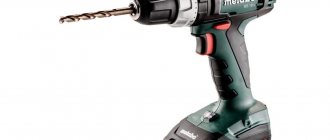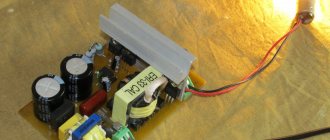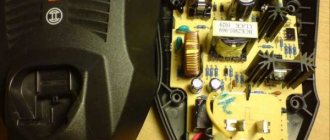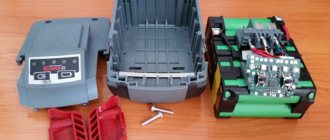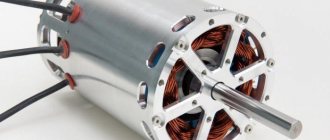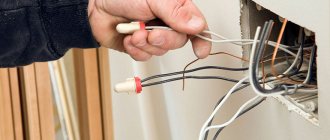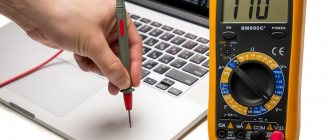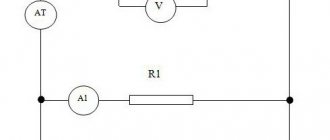One of the most common tools among craftsmen is a screwdriver. In terms of popularity, it is located, perhaps, immediately behind the drill, although it contains some of its functions. The main purpose of this tool is to screw in self-tapping screws, or more precisely, to screw in screws.
It is necessary to consider the main requirements that must be taken into account when choosing a screwdriver for yourself. They are divided into two main types, as is known, network ones, operating from a 220-volt household network, and rechargeable ones, respectively, operating from a battery. Because networked ones are so widespread, we won’t directly consider them here, but will only say that the automatic selection characteristics are probably becoming vital for networked screwdrivers.
What volts is expected from the screwdriver? The battery voltage of a screwdriver directly affects its power. From school physics courses, everyone knows that power is equal to the product of voltage and current. Hence the conclusion is that the higher the operating voltage of the battery, the higher the power of the device. Of the screwdrivers presented in the trade, the most common battery voltages are 6, 12, 18, 24 and 36 volts. Myth Voltage is always shown by the manufacturer on the product label.
To what extent does a screwdriver require watts? This issue was partly covered in the last paragraph. However, it’s worth summarizing that the stronger the screwdriver, the more comfortable it is to work with a child. With all this, it is worth considering that the battery must match the power of the device. The battery power can be calculated based on the energy consumption of the motor that is built into the screwdriver. If the ratios are incorrect, you can quickly discharge the battery without any problems. It is also necessary to see that the stronger the device and the stronger the power source, the higher the weight and dimensions of the tool. And as a result, the cost of the screwdriver is higher. If we consider the battery power, then it is most likely correct to say not the power, but the battery capacity. It is measured in ampere hours and designated as Ah.
Household or professional
As you know, professional screwdrivers are more expensive, but this is no coincidence. They are made with a large margin of safety, for which higher quality and more expensive materials are used. In addition, they have more power, which makes it possible to screw in longer screws and/or work with tougher materials.
The difference between a professional and household screwdriver in resource
To decide whether you need a household or professional screwdriver, assess the amount of work that will need to be done. If you are starting construction or major renovations, you probably need a professional or semi-professional model. If you need a tool periodically to unscrew/tighten something from time to time, a household tool is more than enough. With such work, the professional tool resource simply will not be in demand. So choosing a screwdriver based on this criterion is not very difficult.
Screwdriver for home: what is it?
Before giving specific advice on choosing, let's decide why you need this tool. Based on their purpose, they are divided into household and professional. A household screwdriver is designed for occasional use. Therefore, the power tool is made relatively cheap, low-power, compact and lightweight. Functionality is often sacrificed in favor of low price and lighter weight. Thus, the drilling function or even hammer drilling is often present in more expensive models of household screwdrivers. Constant use of the tool or heavy loads on it lead to premature wear of the internal mechanisms. A professional screwdriver is designed for frequent use and has an increased internal wear life. Professional models are noticeably more powerful, they have higher battery capacity and functionality. They will unscrew any screw, and using hammer drilling they can even make a hole in the plaster. It makes sense to buy a professional screwdriver if you need it for work. There is also a type of tool called an electric screwdriver. They differ from a conventional screwdriver in their smaller size and low power. Designed for unscrewing/twisting screws in hard-to-reach places that cannot be reached with a standard screwdriver. Electric screwdrivers cannot drill.
Battery or mains
Having decided on the class, you will need to decide whether you need a corded screwdriver or a cordless one. The disadvantages and advantages of both are obvious: the battery-powered one has higher mobility and the cord does not interfere with operation, but it weighs more. The network connection does not depend on the presence of battery charge, but not all construction sites have power supply. In general, the choice is not easy. The decisive point may be that a cordless screwdriver with a good battery costs significantly more than a similar model operating from the mains. The difference is due to the presence of a battery - good options are not cheap.
For a corded screwdriver, the length of the cord is important
If you decide to choose a corded screwdriver, pay attention to the cable length. The longer it is, the more convenient it will be to work - you won’t have to carry a carrier either.
To choose the right cordless screwdriver, you need to pay attention to the type of battery. The duration of operation on one charge, as well as the order of storage, depend on this.
The cheapest type of battery is nickel-cadmium, but they have a “charge memory”
So, if you choose a cordless screwdriver for periodic work, a nickel-cadmium battery will do just fine. If you use it carefully, it will last a long time. If you are starting large-scale work, it is better to use other batteries - there will be less downtime, the work will move faster.
Mock Tests
Before starting to build a working structure, you should test everything on the knees, make sure that the screwdriver is operating stable under load and that there is no severe overheating in the power supply.
We take the computer power supply and check it: plug it into the network, find green in the output bundle of wires (they say it can be a different color, but I always came across green ones) and connect it with a jumper to any of the black ones (all black wires at the output are the common output, in our case it is a minus). The unit should turn on and a voltage of 12 volts will appear between the black and yellow wires. You can check this with a multimeter or by connecting any computer cooler to the named terminals.
If everything is in order and the unit produces about 12 volts on the yellow (+) and black (-) terminals, continue. If there is no voltage at the output, we look for another unit or repair this one; this separate topic will be described separately.
We cut off the plug from the output of the block and take 3-4 yellow and black wires coming from the block and connect them in parallel. When cutting off the plug, do not forget about the green starting conductor, it must be shorted to black. We received a 12 V source with a decent current load capacity of 10-20 A, the currents depend on the model and power of the unit.
Now we need to connect our 12 V to the terminals of the screwdriver without a battery; we look at the polarity of the connection using the battery. Well, we check the screwdriver - at idle speed, then slowing down by hand. At this stage, I encountered a problem: when I press the button fully, the screwdriver works, but when I slowly, smoothly press the screwdriver button, the power supply goes into protection. To reset the protection, you must disconnect the unit from the network and turn it on again. This won’t work at all, we need to somehow correct this instability.
Chuck type
Types of screwdriver chucks
The same operation with a key chuck requires a special key. It is inserted into a special socket and turned until the nozzle is released. After replacement, the key turns in the opposite direction. The disadvantage is obvious: you need to have this key on hand.
Choosing a screwdriver based on this parameter is not difficult - usually everyone agrees on quick-clamping ones. They allow you to fix larger nozzles, although all other things being equal they are a little more expensive.
Top review of the best cordless screwdrivers
“Which cordless screwdriver is best?” – this question is fully answered by a comparative review of the best screwdrivers for the home. Therefore, the most popular models of screwdrivers will be considered below. For an objective assessment, a screwdriver test was carried out.
Based on the test results, places are distributed as follows:
- DeWALT DCD790D2;
- Metabo POWER MAXX BS;
- Makita DDF454RFE;
- Hitachi DS18DFL;
- Bosch GSR 1440-LI;
- SKIL 2602 MK;
- HILDA 12 V.
A detailed review, the same rating of screwdrivers, provided an exact answer to the question of which screwdriver to choose for the job. An American-made device came out on top.
Additional options
- reverse, with which you can unscrew and screw in;
- cartridge available on all models;
- an automatic brake that allows the device to stop on its own when it has been tightened to the required force.
There are also additional options such as backlight, magnet, belt hook. These options are more needed for the work of professionals.
Sources:
https://booktube.ru/moshhnost-shurupoverta-12-volt-v-vattah/ https://tehnopanorama.ru/instrumenty/peredelka-shurupoverta-na-pitanie-ot-seti.html https://tehnopanorama.ru /instrumenty/chto-mozhno-sdelat-iz-starogo-shurupoverta.html https://elquanta.ru/instrument/shurupovert-akkumulyatornyjj-kakojj-luchshe.html
Technical specifications
Once you have decided on the type of screwdriver and power supply, you need to focus on the technical specifications. They determine what screws and what material you can screw into.
Example of technical characteristics of a screwdriver
Rotation speed and torque
The force with which a screwdriver can turn a screw is determined by the torque. It can be very small for household models - 10-15 Nm, or can reach 130-140 Nm for professional ones. Therefore, professional screwdrivers can easily and quickly tighten large screws and work with hard materials.
But high torque is not always necessary and not with all materials; therefore, screwdrivers provide the ability to adjust the applied force. There is a limiter for this. It is made in the form of a movable ring, which is located behind the clamping chuck.
The higher the number of revolutions, the stronger the torque
Many models of screwdrivers can operate in two modes: actually tightening the fasteners and drilling. Such models are called drill-screwdrivers, but they are now the majority. To switch to the drill mode, the switch is set to the extreme position (having first replaced the nozzle). At the same time, maximum speed is turned on, which allows you to drill even quite hard materials.
Screwdriver power
Both torque and rotation speed are a consequence of the power of the electric motor. Therefore, we must also look at this parameter. But here it is necessary to monitor three quantities at once: so that the power of the screwdriver corresponds to the speed parameters. Powerful models with good parameters can be found from many manufacturers, but such as Metabo, Bosch and Makita and other well-known ones have very high prices. There are other brands with similar characteristics, but more reasonable prices. For example, RYOBI (Riobi). The brand is still little-known, but according to reviews it is no worse than the above-mentioned famous brands. In order to be able to compare the main characteristics and price of models of approximately the same power, but of different brands, let’s put them in a table.
It’s worth saying a few more words about the number of operating speeds. Do not confuse with the number of rotation speeds. These are two operating modes that are used when working with different sizes of screws or drills. When working with small screws/drills, you can choose a higher speed; when screwing in large screws or drilling large holes, you can choose a lower speed.
Battery options
To choose the right screwdriver with batteries, in addition to the type of batteries, you need to select their operating parameters:
To choose a screwdriver for home or professional use and not regret it, you must review these parameters. If you have selected several models, compare them according to these characteristics, because it depends on them how long the interval between charges of the screwdriver batteries will be.
Bench Drilling Machine
No less important in a home workshop is a drilling machine. An old screwdriver is also perfect for doing it yourself.
First you need to disassemble the tool, removing the engine, gearbox and cartridge from it. You can secure the head of the future machine using clamps made of textolite. To avoid distortions, it is recommended to process the clamps simultaneously. Restrictive posts are made of bushings with threads located in the inner part. The bushings must be the same size.
After this, you should start making 2 bosses from caprolon. A hole is drilled in their central part. The result is 2 eccentric bushings.
Install a clamp on the rod and adjust the backlash. An eccentric is used for this. To ensure the possibility of returning the drilling head to its initial position, the wooden lever is attached to a metal rod with a spring.
Electric current is supplied through the use of a transformer power does not exceed 150 W. Now all that remains is to install the capacitor with a diode bridge and the drilling head on the frame. The lathe is ready for use.
Additional functions
As usual, these functions are not mandatory, but they significantly increase ease of use. Some, if they raise the price, do not raise it significantly, while others raise it quite significantly. To choose the most inexpensive screwdriver, you can get by with the minimum - reverse and the presence of illumination of the work area. The rest, of course, are useful, but are more suitable for professionals.
Some additional features are very useful
Reverse or reverse
The presence of this option allows you to unscrew a screw or drill stuck in the material. The direction of rotation changes when the polarity of the power supply changes, which is done through a special button. It is usually installed near the trigger lever.
Examples of the location of the reverse button in a screwdriver
Most often, the button for switching the direction of travel has three positions: on average, the tool is blocked. This increases safety: if you accidentally touch the lever, the screwdriver will simply stop, rather than immediately start rotating in the opposite direction.
Work area lighting
A very convenient option that does not greatly affect the price of the screwdriver is illumination of the work area. With good lighting it is much easier to control the instrument.
Illumination of the work area is a useful additional function of a screwdriver
An LED is built into the handle or body of the tool near the chuck, which lights up when the start button is pressed. If you want to choose a screwdriver that is convenient to work with, make sure that the work area is illuminated.
Battery indicator
If you decide to choose a cordless screwdriver, it would be a good idea to have a battery charge indicator. These are LEDs of different colors - green, yellow, red, which are located on the body. If the light is green, the charge is full; if it is red, the charge is almost empty.
Battery indicator
The location of the indicator depends on the company, but is usually located on the thickening of the handle, in the same place as the backlight LED, or in the upper part of the case.
Automatic feeding of screws
Such screwdrivers are also called shop screwdrivers. This option is useful for professionals, especially those who work with drywall, where fasteners must be installed in small increments. Self-tapping screws are attached to a special tape, tucked into guides, and automatically fed into the holder.
Screwdrivers with automatic fastener feed
This option can be implemented in two ways: there are store-bought screwdrivers (pictured on the left) and there are attachments for a regular screwdriver. For home use, the second option is preferable, since the tool can work as a drill or in reverse. A shop screwdriver is highly specialized equipment for professional use.
Source
rimeiks › Blog › Modernization of a 12-volt screwdriver.
I have long been planning to modify this much-needed tool with the ability to “power from an external 12 Volt source, but, as they say, “until the thunder strikes...”. And then “thunder struck”, they began to make furniture. Assembly with screws, the tool is in use almost continuously, but... Now everything is in order. I purchased an Interskol screwdriver about five years ago. It worked well for a long time, being used from time to time as needed.
But time takes its toll, the batteries have little time to hold a charge and have lost capacity. Finally one of the batteries stopped charging altogether. By the way, this battery had previously fallen off the table and damaged the case; however, the case was successfully repaired with the help of Poxipol.
It is quite possible to buy new batteries, but their cost is commensurate with the cost of the screwdriver itself. It was decided to sacrifice the integrity of one of the batteries to connect power from an external source. Moreover, 12 Volts is the most “car garage” voltage, so there will be no problems with choosing a source. The battery case was disassembled (5 screws, one under a sticker with the inscription “Do not open”), and the battery cells were removed from it. components of the battery. 9 pieces from the bottom and one, tenth, from the leg with contacts, pushed into the screwdriver handle.
The red positive wire going to the battery contacts is sealed off from the battery, the charging wire running from the middle contact of the battery through the thermal switch to the positive is disconnected and the negative wire is torn off when removing the element in the leg. At the back, in the lower part of the battery case, a hole was drilled and wires were passed through it. Red and blue. soldered to the contacts of the battery case (in the leg) to + and - instead of the battery.
I connected the stripped ends of the wires to the car battery and everything worked!
Please excuse me, the battery is covered in sawdust, work is in progress.
The charge indicator on the screwdriver showed a full charge.
A small drawback appeared - the screwdriver stopped “standing on the handle”, the weight decreased and the center of gravity moved. Now he can only lie down.
How to Find out the Power of a Screwdriver
One of the most common tools among craftsmen is a screwdriver. In terms of popularity, it is located, perhaps, immediately behind the drill, although it contains some of its functions. The main purpose of this tool is to screw in self-tapping screws, or more precisely, to screw in screws.
It is necessary to consider the main requirements that must be taken into account when choosing a screwdriver for yourself. They are divided into two main types, as is known, network ones, operating from a 220-volt household network, and rechargeable ones, respectively, operating from a battery. Because networked ones are so widespread, we won’t directly consider them here, but will only say that the automatic selection characteristics are probably becoming vital for networked screwdrivers.
What volts is expected from the screwdriver? The battery voltage of a screwdriver directly affects its power. From school physics courses, everyone knows that power is equal to the product of voltage and current. Hence the conclusion is that the higher the operating voltage of the battery, the higher the power of the device. Of the screwdrivers presented in the trade, the most common battery voltages are 6, 12, 18, 24 and 36 volts. Myth Voltage is always shown by the manufacturer on the product label.
To what extent does a screwdriver require watts? This issue was partly covered in the last paragraph. However, it’s worth summarizing that the stronger the screwdriver, the more comfortable it is to work with a child. With all this, it is worth considering that the battery must match the power of the device. The battery power can be calculated based on the energy consumption of the motor that is built into the screwdriver. If the ratios are incorrect, you can quickly discharge the battery without any problems. It is also necessary to see that the stronger the device and the stronger the power source, the higher the weight and dimensions of the tool. And as a result, the cost of the screwdriver is higher. If we consider the battery power, then it is most likely correct to say not the power, but the battery capacity. It is measured in ampere hours and designated as Ah.
Electric snowmobile
To create a simple and reliable snowmobile, cordless screwdriver is suitable. The snowmobile frame can be made from a sled with steering control. Attach a screwdriver to the iron frame. For this, a wheel welded to the rear of the frame is used.
The chain and 2 sprockets create a rotational motion that turns the snowmobile wheel, causing the sled to move. The snowmobile control consists of a cable, the end of which is connected to the screwdriver power button. The other end of the cable is attached to the steering wheel. As a result of clamping and releasing the handle on the steering wheel, the screwdriver .
READ How to Correctly Cut the Outside Corner of a Skirting Board
How to choose a screwdriver. Main characteristics of the screwdriver.
What is the torque in a screwdriver? An explanation is needed here. There is a tightening torque for the screwdriver, or more precisely, a torque. For car owners, the expression “torque” is probably familiar. So as not to overwhelm you with definitions, I’ll simply say that the tightening torque is the greatest constant load on a screwdriver, at which the device is required to continue screwing at a constant speed. The higher the torque, the more long and thick screws will not be difficult to “drive” into walls and other obstacles. Torque is measured in Newtons per meter and is abbreviated as Nm. It’s better not to buy screwdrivers with a torque below 10-12 Nm.
Screwdriver, what rotation speed should I choose?
How to check battery capacity with a multimeter | Li-Ion capacity tester
Here you need to find it for yourself. If you want to use the device only for tightening self-tapping screws, then this is one thing, if of course the desire, as it is also called, the need to also drill something inadvertently, then this device must have completely different properties. When we talk about properties, we mean the speed of rotation of the rotor. For standard screwdrivers it is about 750 rpm. Also, of course, two-speed models, which will be more expensive, alas, here you already get two speed ranges. For example, 750 and 1200 rpm. Is a different speed so important for a screwdriver? It’s hard to say, because the work will be done in both cases. With small volumes of screwing in screws, you won’t feel this at all, but the screwdriver as a drill has already completely flashed on the horizon. But here, in addition, the speed of a fully functional drill is approximately 2400 rpm. If your screwdriver is capable of this, then good. The reverse situation is when they want to get a screwdriver from a drill. It won't be an equal exchange because the drill doesn't have a friction clutch. A friction clutch is a device that is adjusted to operate at a certain torque value. If you tighten small screws, then you set the triggering moment less. Otherwise, at a high moment, the screwdriver will drive the screw so deeply that this may be a prerequisite for the rejection of the wall, board and other parts on which the self-tapping screw was screwed. A drill, as a rule, does not have a friction clutch.
Should I buy a screwdriver with a hammer drill function? A hammer drill is a function of a drill and it serves to be able to drill stubborn surfaces such as concrete, brick, etc. If you can’t wait for your screwdriver to work as well as a good drill, then feel free to purchase a model with such “bells and whistles”. Otherwise, this is an extra function, you don’t need to overpay for it. Be sure to read the article Why Concrete Can't Drill? Drills burn and break.
Peak current of screwdriver
Screwdriver, whose to choose? With great precision, the question posed sounds like which screwdriver to choose. In this situation, the choice is up to you. Our client is left with the listed reasons for the choice we discussed. All you have to do is proceed from the characteristics of convenience, price and personal sympathy. We will not list well-known brands and talk to you about their pros and cons. For you to work with inventory. Look. Is it comfortable to hold in your hand, will it be heavy when performing long tasks, etc. We are confident that you will get what you need!
Source
Selecting a screwdriver based on voltage and other parameters
When choosing the right screwdriver for a particular task, you should pay attention to various characteristics. Among them, the most important are not only the power of the device and the capacity of its battery, but also the battery voltage, and even the torque value.
When carrying out construction and repair work, a screwdriver is an indispensable tool that simplifies the tightening of various types of fasteners, and sometimes even drilling holes. And, despite the fact that there are two versions of this device - mains and battery-powered, more often the latter option is chosen to perform household tasks. At the same time, attention is paid to the parameters of the power tool itself and to such characteristics as the voltage in the screwdriver, its power, torque and battery capacity. Each of these indicators is important for evaluating and choosing the correct device. Whereas it’s not worth buying based on suitable power or voltage alone.
power unit
We will not consider purchasing any units or transformers, and if we do buy it, it will be a new battery! We will consider using what we have on hand. I’ll say right away that the charger from the same screwdriver is only suitable for drilling overripe bananas, its power is too low.
Ideally, a step-down, powerful 12 V transformer, for example from a computer uninterruptible power supply, would be suitable. The power of such a transformer is usually 350-500 watts. But I didn’t have such a transformer, but I had a lot of computer power supplies. I am sure that if someone has various electronic junk, ATX computers are definitely lying around in it.
The computer ATX unit is quite suitable for a screwdriver; the load capacity on the +12 volt bus allows you to remove currents of 10-20 amperes. I would like to dispel a small myth - it will not be possible to stuff the unit into the battery housing of a screwdriver, the ATX board is too large. You will have to make a separate case for the block or leave it in its original metal case. The disadvantage of the original case is sensitivity to dust, and even the smallest repair requires a lot of dust.
Basic parameters of the battery and the tool itself
The main parameter that characterizes the operation of a screwdriver is the battery voltage, which, in turn, determines the power of the electric motor and torque . For household models, the difference in voltage between screwdrivers is small - on average, it is in the range of 10.8–14.4 V. More productive options intended for constant use can be equipped with 24–36 volt batteries.
The battery voltage of a screwdriver also depends on the type of battery - you can answer what the difference is by knowing what metals were used to make it. For nickel-cadmium batteries, large in size with a similar capacity, the value of the indicator is a multiple of 1.2 V (this is exactly the voltage of one element that makes up the battery pack), for lithium-ion batteries - 3.6 V.
Other equally important characteristics include:
There are two types of torque for screwdrivers - starting (larger in magnitude and required to put the device into operation) and constant, that is, working. The parameter value for modern equipment models can be adjusted - you can find out how many modes can be selected for a particular device in the documentation available for it. Moreover, tools with a pulse mode of operation (turning on the rotating part in jerks) have more screwing capabilities - allowing them to periodically increase the torque, they can screw in a larger screw.
The output torque value of electric motors is not constant and depends, first of all, on the speed of the motor; the higher the speed, the lower the torque on the shaft.
In addition to the voltage of the screwdriver and its power, the battery capacity should also be assessed. The characteristic is measured in ampere-hours or milliamp-hours. The higher the indicator, the longer the screwdriver can work without recharging.
The average battery capacity of a household model is 1300 mAh, which is enough for 2–3 hours of operation. Professional equipment requires more time to complete the work - and a master who uses a screwdriver throughout the whole working day should purchase a model with a battery of 1.5–2.0 Ah or more.
Comparison of batteries used for screwdrivers
Having briefly looked at the types of batteries, let's compare them with each other according to 10 characteristics, which will help you figure out which batteries are better for screwdrivers. Let us immediately warn you that there is no absolute favorite in all categories, and you need to pay attention to those advantages that will be needed for a certain activity and area of use.
Nickel-cadmium (NiCd)
This type of battery appeared in the middle of the twentieth century. The cathode in it is nickel oxide hydrate supplemented with graphite powder. To make the movement of ions from the cathode, an electrolyte is used - potassium hydroxide. The last main element is the anode, which is made of cadmium oxide hydrate. The second embodiment is cadmium iron, used in powder form.
Dimensions
Screwdriver batteries are fixed to the tool handle. The weight of the screwdriver and the ease of holding it depend on the size of the batteries. This is especially important during long manipulations and work overhead (fastening beams to the ceiling, sheets of drywall, fixing panels in inaccessible places). The heaviest and largest are NiMh and NiCd.
Li-Ion is produced in smaller sizes. They are often made as a clip that only takes up space in the screwdriver handle, without an extended outer part.
What does battery voltage mean?
For cordless models, the force and rotation speed of the screwdriver depend on the battery voltage, which must correspond to the characteristics of the tool:
- For screwdrivers, the highest value is 36 V. These are the most massive devices for working with metal and hard wood.
- 12-18 V is an average value suitable for most repair and installation processes.
- 3-10 V - are considered low-power, and are used only for assembling soft materials or small-diameter fasteners.
Installing a higher-power battery on a weaker, faster model will result in the latter breaking down. A 12 V battery on a device designed for 18 V will, on the contrary, limit the power of the tool, therefore the voltage indicator of the drive must exactly correspond to the value on the screwdriver.
Keep in mind that if you take two batteries with a similar capacity, the one with a higher voltage will ensure longer-term operation of the tool.
Which battery is better: lithium or nickel-cadmium?
This question about which battery is best for a screwdriver is not posed entirely correctly. It all depends on the situation and the length of time the tool will be used.
types of batteries
The diversity of rechargeable batteries is due to the fact that various chemical elements can be used as electrodes and electrolytes. The quality of operation of the power tool used depends on the correct choice of energy storage device. The following 3 types are most widespread in the field of electrical appliances:
A lithium battery pack weighs less with the same capacity as cadmium. But this is not the main indicator on the basis of which you should choose a battery for a screwdriver.
Of course, the number of charge-discharge cycles for cadmium cells is several times less than for lithium cells. The standard for Ni-Cd is 500 and for Li it is 1500, which certainly initially makes one think that lithium batteries are much better and lighter in weight.
When choosing batteries, it is important to take into account the fact that the aging of nickel-cadmium batteries depends solely on the cycles they operate, and not on their actual age!
The service life of lithium-ion batteries, unlike cadmium, directly depends on age over the years. After 3 years they will already fail, even if they have not been used.
Nickel-cadmium batteries, on the other hand, will last a long time even if they are rarely used.
For example, when buying a used screwdriver, you should not take it with lithium batteries. There is a high probability that if the tool has not been used for a long time, or has been frozen frequently, its battery pack is no longer suitable for use.
If a used Shurik is sold with cadmium batteries, they can retain up to 60% of the charge, regardless of whether the tool was used or not.
If the screwdriver is not used very often, lithium batteries are more likely to “grow old” than to serve their required 1500 cycles. Therefore, for periodic household use there is no point in buying a tool with lithium batteries.
Cadmium can last 3 to 5 years, whether batteries are used or not. It can also easily lie in a warehouse, maintaining its properties, unlike lithium. If you do not plan to use a screwdriver often, the answer to the question of how to choose a battery will be short and truthful: choose cadmium.
Thus, it becomes clear that nickel-cadmium batteries are, in fact, no worse than lithium batteries. The main question is only the scope of application of both types of chemical batteries.
When used at the right time and in the right place, both can be equally useful and good.
Ni-MH batteries
Nickel-metal hydride batteries are less common than nickel-cadmium batteries for screwdrivers.
Their advantages include the absence of toxic components, environmentally friendly production, a slight “memory effect” and lower self-discharge than nickel-cadmium batteries.
In addition, when compared with Ni-Cd batteries, nickel-metal hydride batteries have a larger capacity and can withstand a greater number of charge-discharge cycles.
Ni-MH battery has the following advantages:
Store nickel-metal hydride batteries half-charged and in a cool place.
Lithium-ion (Li ion). The most modern batteries
When thinking about how to choose a cordless screwdriver, we note that the most modern lithium-ion batteries also have their pros and cons.
Let's list their advantages:
They also have disadvantages and they are quite serious:
Another important point to remember is storing the cordless screwdriver. Nickel-cadmium batteries can be stored when discharged. Nickel metal hydride batteries, on the contrary, must be fully charged before long-term storage (several months).
A separate thing needs to be said about lithium-ion batteries: they don’t care whether you store them charged or discharged. However, remember that they get old quite quickly. Therefore, buy a tool with such power sources not for one-time work, but for intensive use. After just 1 year, a lithium battery will lose about 30% of its original capacity, and after 2 years the battery will have to be thrown away.
Features of choice
As you know, professional screwdrivers are more expensive, but this is no coincidence. They are made with a large margin of safety, for which higher quality and more expensive materials are used. In addition, they have more power, which makes it possible to screw in longer screws and/or work with tougher materials.
The internal gears of the gearbox can be made of plastic or metal. The difference between a professional and household screwdriver will be in the resource
To decide whether you need a household or professional screwdriver, assess the amount of work that will need to be done. If you are starting construction or major renovations, you probably need a professional or semi-professional model. If you need a tool periodically to unscrew/tighten something from time to time, a household tool is more than enough. With such work, the professional tool resource simply will not be in demand. So choosing a screwdriver based on this criterion is not very difficult.
When choosing power, you should take into account not only what power of the screwdriver is indicated in the information from the manufacturer. Due to too much productivity, the device may tighten the screws too tightly, pressing their heads into the surface. As a result, the appearance of the coating deteriorates, and the fasteners, if necessary, are almost impossible to unscrew.
When choosing which voltage is best for a screwdriver, you should take into account that voltage is the main parameter of the device. For example, the motor power of the Makita DDF343SHE screwdriver is 700 W, with a voltage of 14.4 V and a battery capacity of 1300 mAh and a torque of 36 Nm. Whereas the other model Hammer ACD182 has a weaker engine (22 Nm) and a less capacious battery (1200 mAh) - and it seems that this device is about 40% weaker. However, due to the 18 V voltage, the Hummer is able to tighten more fasteners without recharging, even being inferior to its competitor in terms of battery capacity.
You can understand why a screwdriver that seems less productive at first glance is inferior to a more powerful one by doing a little calculation:
When choosing a screwdriver, it is advisable to take into account the presence of a spare battery included with it. Some models even have 2 additional batteries. On the one hand, such equipment will cost more (especially since the cost of the battery is up to 80% of the price of the equipment), but it will be much more convenient to work with it. At the same time, an additional battery is not needed to perform household tasks - the time of work performed with its help rarely exceeds 1–2 hours. While in the process of constant use of a screwdriver (for example, for repair work or furniture assembly), the second battery allows you to not interrupt the work for longer than a few minutes. The discharged battery is charged, and a spare battery is installed in the device.
If there is no need for long-term work, which may require a screwdriver, it is not recommended to buy a model with additional batteries, not only because of its increased cost. It’s just that the service life of such a battery is short, and after a couple of years the user will have to buy a new part without using up even half of the life of the old one.
Assembly of the working structure
For ease of use and connection, I brought the cord from the power supply into the battery case. I took a 3.5 meter long cord that was available. I removed all the battery cells from the battery and installed an LC filter. Now, if I somehow get a working battery, I can always put it on a screwdriver and put the power supply away as a reserve. I didn’t throw the batteries out of the battery, I have an idea where to use them, but that’s a topic for another review.
Since the cord connecting the unit to the screwdriver has a certain resistance and inductance, you can try to close the terminals of the L1 coil with a jumper. In theory, this could increase power by a tiny amount.
